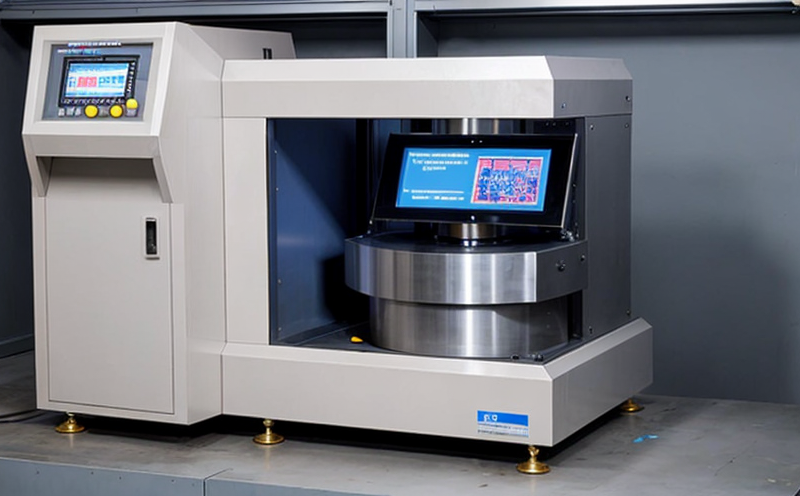ASTM E2919 Dimensional Accuracy Testing Using CT Scanning
The ASTM E2919 standard provides a comprehensive approach to evaluating dimensional accuracy in parts produced via additive manufacturing (AM) and 3D printing technologies. This method utilizes computed tomography (CT) scanning as the primary tool for non-destructive testing and inspection.
Dimensional accuracy is critical in AM and 3D printing, where precision can significantly impact product performance, reliability, and safety. ASTM E2919 ensures that parts meet design specifications by providing a standardized method to assess deviations from nominal dimensions. This service addresses the challenges faced by quality managers, compliance officers, R&D engineers, and procurement professionals who seek assurance that their AM-produced components are within acceptable tolerances.
CT scanning allows for detailed visualization of internal features as well as external surfaces, which is particularly beneficial in complex geometries where traditional methods may be insufficient. This non-destructive technique ensures that parts can be thoroughly inspected without compromising their integrity or functionality.
The ASTM E2919 method involves several key steps: specimen preparation, scanning parameters, data acquisition, and analysis. Specimens are typically prepared by removing any support structures if necessary to ensure accurate measurements. The scanning process uses high-resolution CT equipment capable of capturing detailed cross-sectional images of the part. Post-processing software then extracts dimensional information from these images, allowing for precise comparison against CAD models.
Acceptance criteria under ASTM E2919 are based on allowable deviations specified in the part's design specifications or industry standards. These deviations can be expressed as percentage tolerances or absolute values depending on the application. The service provider ensures that all measurements fall within these prescribed limits, thereby confirming compliance with relevant regulations and quality requirements.
By adhering to ASTM E2919, manufacturers can demonstrate their commitment to producing high-quality AM parts that meet stringent dimensional accuracy standards. This not only enhances customer confidence but also supports ongoing improvements in manufacturing processes through detailed inspection data.
In conclusion, ASTM E2919 Dimensional Accuracy Testing Using CT Scanning offers a robust solution for ensuring precise and reliable additive manufacturing outputs across various industries.
Why It Matters
The importance of dimensional accuracy in additive manufacturing cannot be overstated. Even small deviations from design specifications can lead to significant issues such as functional failure, reduced performance, or increased costs due to rework and scrap. Ensuring that parts manufactured using AM technologies meet the required dimensional tolerances is essential for maintaining quality control throughout production processes.
Accurate measurements play a crucial role in verifying that each part produced via 3D printing aligns with its intended purpose. For instance, aerospace components need to fit perfectly into assemblies without compromising safety or efficiency. Automotive parts must ensure seamless integration within vehicles while meeting stringent durability and reliability standards. In medical devices, precise dimensions are vital for ensuring compatibility with human anatomy.
Compliance with ASTM E2919 not only satisfies regulatory requirements but also builds trust among stakeholders by demonstrating adherence to best practices in the field of AM technology. It helps establish credibility within supply chains by providing tangible evidence that parts produced through additive manufacturing meet or exceed expected quality levels.
The use of CT scanning as per ASTM E2919 provides an unparalleled level of detail, enabling detailed analysis not only at external surfaces but also within intricate internal structures. This capability ensures comprehensive inspection, reducing the risk of undetected defects that could compromise product integrity.
Industry Applications
| Industry Segment | Application |
|---|---|
| Aerospace & Defense | Ensuring precision in critical components that must fit into complex assemblies without compromising safety or performance. |
| Automotive Manufacturing | Verifying that parts integrate seamlessly within vehicles while meeting stringent durability and reliability standards. |
| Medical Device Production | Guaranteeing compatibility between medical devices and human anatomy through precise dimensional measurements. |
| Metalworking | Evaluating the accuracy of metallic parts produced via AM for applications requiring high strength-to-weight ratios or complex geometries. |
| Consumer Electronics | Ensuring that small, intricate components fit together correctly within electronic devices to maintain optimal functionality and reliability. |
| Prototyping & Rapid Manufacturing | Offering quick turnaround times for prototypes or small batch productions while maintaining high levels of dimensional accuracy. |
| Industrial Machinery | Verifying that critical components fit together correctly within machinery to ensure smooth operation and extended lifespan. |
| Consumer Goods | Maintaining consistent product quality by ensuring that parts produced via AM meet strict dimensional specifications for consumer goods. |
The versatility of ASTM E2919 Dimensional Accuracy Testing Using CT Scanning makes it applicable across multiple sectors, from aerospace and defense to medical devices and consumer electronics. By providing precise measurements, this method supports quality assurance initiatives across various industries, ultimately leading to safer products and more efficient manufacturing processes.
International Acceptance and Recognition
The ASTM E2919 standard has gained widespread acceptance globally due to its rigorous methodology and comprehensive approach to evaluating dimensional accuracy in additive manufacturing. This international recognition underscores the importance of this testing method in ensuring consistent quality across different regions.
Aerospace manufacturers, for example, are increasingly adopting ASTM E2919 as part of their quality control protocols to meet stringent regulatory requirements set by organizations like NASA and the Federal Aviation Administration (FAA). Similarly, automotive companies worldwide rely on this standard to ensure that parts produced through AM integrate seamlessly within vehicles while meeting global standards.
The medical device industry also places great emphasis on compliance with ASTM E2919. As part of their quality management systems, many companies use this method to verify the accuracy of critical components used in life-saving devices. The standard's acceptance by leading regulatory bodies such as the Food and Drug Administration (FDA) further reinforces its reliability and validity.
In addition to these industries, ASTM E2919 is recognized across various sectors including metalworking, consumer electronics, prototyping, industrial machinery, and consumer goods. Its broad applicability reflects the growing importance of dimensional accuracy in additive manufacturing processes worldwide.





